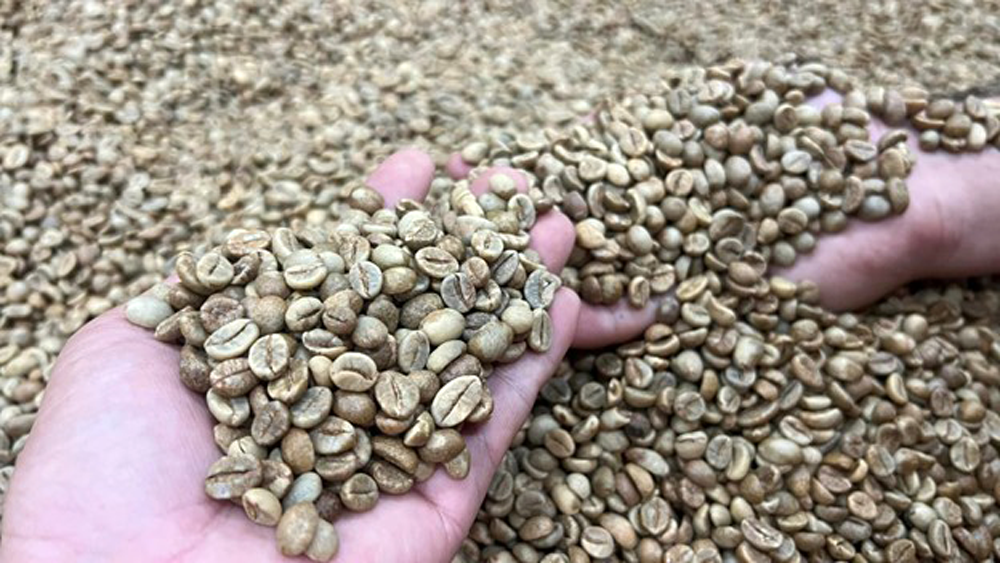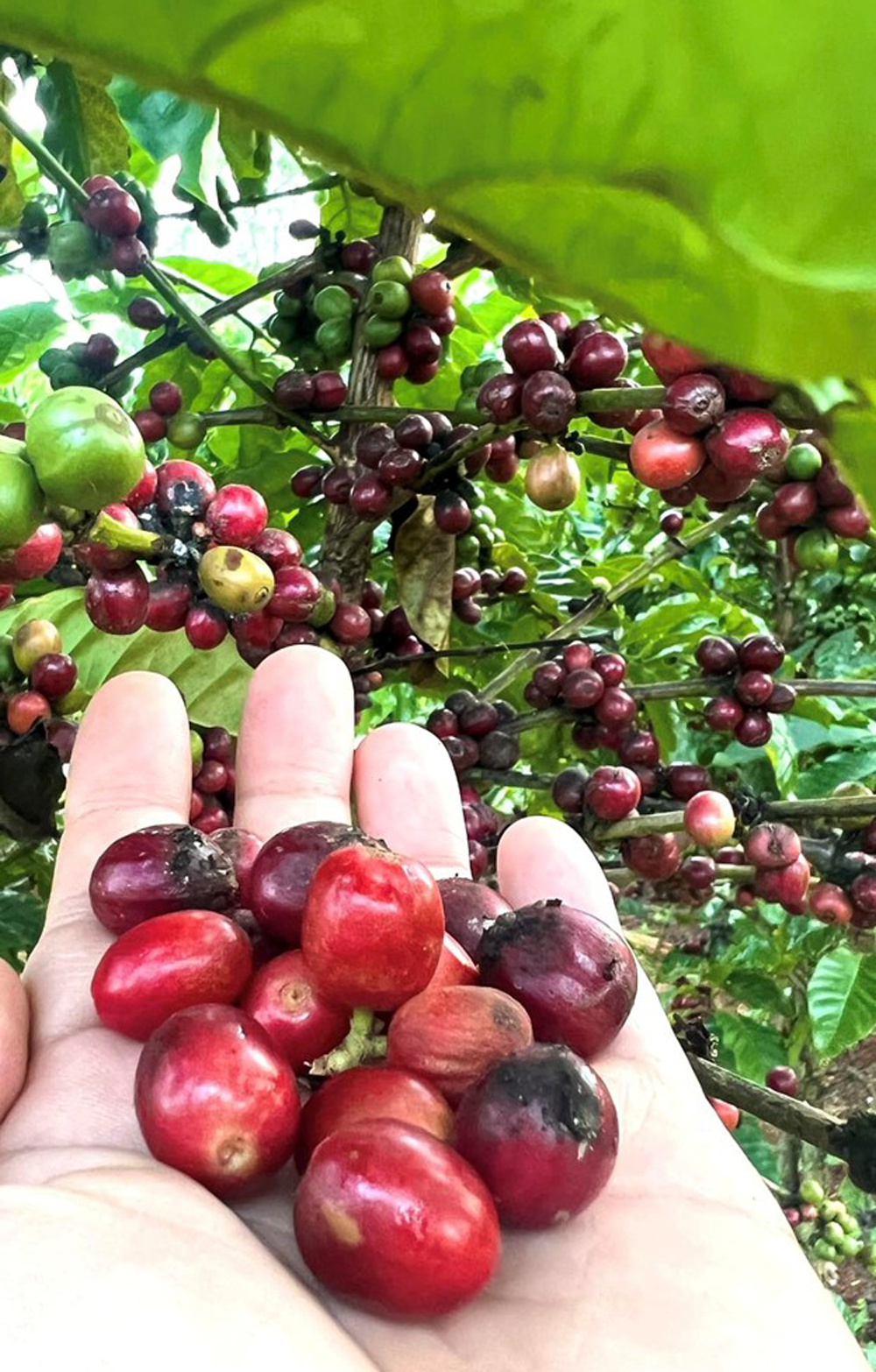According to Mr. Do Ha Nam, Vice President of the Vietnam Coffee and Cocoa Association, up to this point, coffee output has decreased four times, but prices have increased by 3.4%. Coffee is increasingly popular with world consumers because the world’s population is increasing and the demand for coffee is considered by experts to be unabated.
Currently, Vietnamese coffee is chosen by world consumers because of its quality. However, if the coffee industry wants to increase value further, from production to processing, quality must always be given top priority.
According to statistics from Vietnam Customs, in the first 11 months of 2023, Vietnam’s coffee industry exported 1.36 million tons, worth an estimated 3.5 billion USD, an increase of 3.4% over the same period in 2022. However, the amount of coffee exported has gradually decreased in the last 2 months. The reason assessed by coffee industry experts is that Vietnamese coffee inventories have decreased to the lowest level ever.
Vietnam has the 6th largest coffee area in the world, but its coffee output ranks 2nd in the world, thanks to its high output. However, after a period of stagnation, coffee prices have now reached their peak because supply is decreasing even though Vietnam is entering the new harvest season of 2023–2024.
Mr. Nguyen Nam Hai, Chairman of the Vietnam Coffee and Cocoa Association, said: Of each type of coffee exported from November 2022 to November 2023, Robusta coffee accounts for the highest ratio with 1.49 million tons, worth 3.3 billion USD; Arabica green coffee exports only 41,500 tons, worth 169 million USD; and decaffeinated green coffee exports 36,000 tons, worth 136 million USD.
Roasted, ground, and instant coffee exports are about 90,000 tons (not converted into green coffee), worth about 510 million USD (volume accounts for about 5.4% and turnover accounts for about 12.5% of total coffee types). coffee exports in the 2022–23 coffee season).
Compared to the previous crop year, this crop’s Robusta coffee export increased by about 0.7% in volume and 10.8% in turnover. Meanwhile, Arabica coffee decreased by about 30.7% in volume and 34.9% in turnover.
According to Mr. Do Ha Nam, Vice President of the Vietnam Coffee and Cocoa Association, up to this point, coffee output has decreased four times, but prices have increased by 3.4%. There was a time when the price of coffee increased to 70,000 VND/kg, and it is predicted that in the next season the price may increase further because of the lack of supply.
However, the value of coffee will increase even more if Vietnamese coffee farmers pay attention to the quality of their raw coffee beans. To have the best quality coffee beans, the coffee must be picked when it is ripe. When the coffee fruit ripens, its weight will increase by 10%.
This both helps increase coffee output and improve coffee quality during processing. However, with current coffee prices, managing coffee gardens and waiting until ripe to harvest will face many difficulties due to poaching, especially in the Central Highlands region. Harvesting ripe coffee will also cost a lot of labor because the amount of ripe fruit is not uniform, so most farmers are forced to harvest simultaneously.
not only focusing on harvesting to create quality coffee beans. The Vietnam Coffee and Cocoa Association also emphasized tracing the origin and growing area codes so as not to violate the regulations of importers, especially European importers. Currently, Vietnam’s largest coffee import market is Europe; the second is the US market; the third is the Chinese market; and some other markets
Mr. Do Ha Nam commented that, through a report from the Ministry of Agriculture and Rural Development, the country’s coffee area is estimated at nearly 720,000 hectares, but in fact there are only 600,000 hectares of coffee; the remaining area is grown by farmers. mixed with other plants.

Of this total of nearly 720,000 hectares, there are only more than 185,000 hectares of coffee area certified for sustainable production. With UTZ Certified certifications (global certification for responsible coffee production and trading), receive Rainforest (a code of practice for the development of biodiversity conservation and sustainable development globally implemented by the RA Organization); 4C certification (the Coffee Community Common Code, which is a global certification system for sustainable coffee growing and production); and VietGAP certification (Vietnam’s Good Agricultural Production Practices). This is a small number compared to the area without certificates.
In the issue of intercropping and traceability, Europe’s new geographical indication regulations focus on people deforesting to grow coffee and intercrop, which is ecologically disruptive and unsafe for the environment. Therefore, improving coffee quality and the competitiveness of Vietnamese coffee includes managing coffee production areas on agricultural land and strictly managing planting area codes to avoid violations and deforestation.
Mr. Nguyen Quang Binh, Editor-in-Chief of Vietnam Coffee Magazine, commented: The current market is a buyer’s market. Therefore, no matter what you do, Vietnamese coffee must meet the buyer’s criteria to sell at a high price. Typically today, new European regulations and consumer demand create effects on coffee prices. With supply gradually decreasing until April 2023, the market will create the next round of coffee price increases with quality coffee sources.
Because of this decrease in output, in the final months of the 2022–2023 crop year, the coffee industry had to import more than 100,000 tons to serve processing and export. Mr. Nguyen Nam Hai also predicted that in the 2023–2024 Vietnamese coffee crop year, due to the effects of climate change, the harvest time will be later than in the 2022–2023 crop year, so imports will mainly serve for processing, creating high-value coffee for export while waiting for the crop to grow.
Source: Bnews



 Tiếng Việt
Tiếng Việt